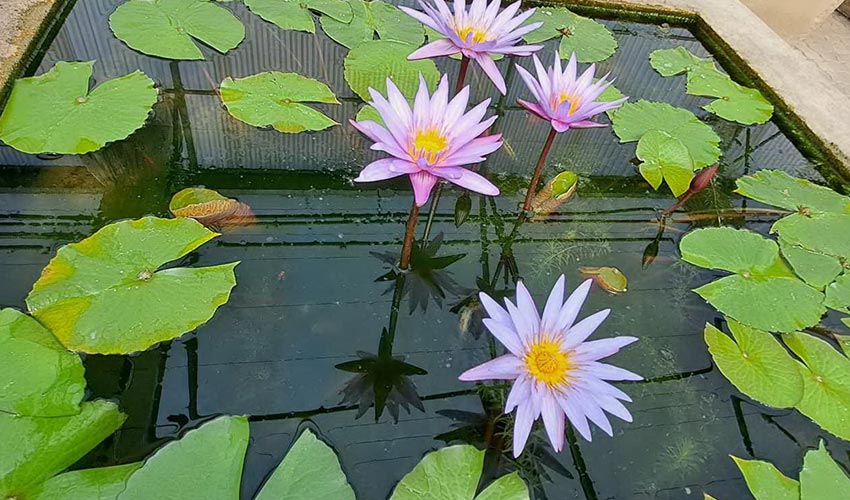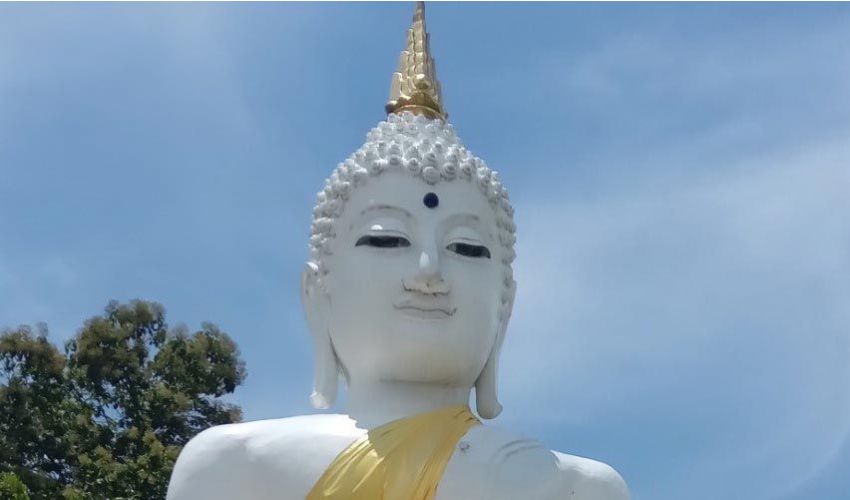The Sound of Silence
In the realm of silence, we must be wise enough to differentiate between the liberating hush and the imprisoning hush. Silence is like the magical force that holds the power of transformation! But beware, for silence can be dangerously wielded like a weapon to serve the unholy trinity of greed, aversion, and delusion. This is where our understanding must come into play, for in this silent battleground, there is a clear distinction between the noble silence that brings enlightenment and its mischievous doppelgänger - the ignoble silence.
In the ancient world of Buddhism, silence reigns supreme. It's like the holy grail of tranquillity, praised by the Buddha himself. From intense meditation retreats to peaceful mealtime gatherings, silence is the name of the game. Why all the hush-hush, you ask? Well, it's to create the perfect conditions for some serious self-reflection. You know, taking a moment to really get to know your body, mind, and soul. You'll be surprised by what you find lurking under the surface. But let's not get ahead of ourselves. We live in a noisy world, and that's okay. We're not saying you have to join a monastery and become a hermit. We just need a little bit of silence in our lives. It is beneficial to experience a brief retreat from the chaos and commotion to focus on our inner selves. It's like pressing the pause button on the world for a moment. And let me tell you, those moments of silence can be life-changing.

During our daily meditation practice, we create our own personal escape from the outside world. We shut out the sights, sounds, and distractions and dive deep into our own minds. It's like peering into a murky pond after a storm. At first, it might be a little unsettling. Old emotions and grudges might bubble up to the surface. But hey, we can handle it. We're not afraid to face our demons head-on. And through this cultivation of silence, we find clarity. Our minds become still, like a calm pond. We start to see things that were hidden beneath the surface. It's not always pretty, but it's necessary. We can't change what we're not aware of, right? So, we embrace the discomfort and let it guide us towards growth and transformation.
But here's the thing, noble silence shouldn't be torture. It shouldn't feel like sensory deprivation or provoke an anger fit at every little noise. That's not the goal here. We want silence that nourishes us, that feeds our souls. It's about releasing, not repressing. So, let's embrace the silence. Let's uncover the mysteries of our own minds and find that inner peace we've been searching for. We do this quietly, of course.
Silent Betrayal - Uncovering the Ignoble Truth
Shhhh... Not all silence is golden. Ever heard of the "evil twin" of noble silence? Meet ignoble silence, which is the kind that stems from unwholesome states of mind and leads to suffering. It's the silence of fear, violence, and shame, not something the Buddha would have praised. Picture it: the myriad ways marginalised groups have been quieted by the dominant culture. When we speak up, we're told to hush, as if our voices don't matter. This kind of silence is the silence of oppression. Think about it. What kind of silence do we impose on others or ourselves out of a fear of speaking? It's a problem when what we could say aligns with truth, justice, wisdom, compassion and speaking could make a difference. Especially for those who have the power and privilege in society to speak out but choose not to.
We shouldn't just ignore someone suffering or say, "Well, it's all I can do to take care of myself." We help if we can. Sometimes that help is in the form of a kind word or standing up for what is right and true, instead of staying silent in situations where speech is called for. Undoing the oppressiveness of ignoble silence means following the Buddha’s instructions on virtuous speech: speaking words worth treasuring, words that are helpful and true. Words of benefit. Slowly, we can move toward speech that heals, both personally and societally, by acknowledging when we use silence to repress or avoid our deepest issues. We need less silence and more engagement with ourselves and our experiences, enlisting the help and love of those around us. It's not about embracing solitude, but embracing authenticity and vulnerability. So, let's break free from the grip of ignoble silence and speak up!

Silence - Shifting from Wholesome to Unwholesome
In life, we're not just passive bystanders. What we need is a hefty dose of wisdom in every situation. With a clear mind, we can figure out what's good and what's not-so-good, and strive to steer things in a positive direction. It might take some courage and assertiveness to speak up when something's amiss, to give constructive criticism with the aim of helping, not harming. Silence can be a powerful tool, but it all comes down to our intention and the impact it has. Are we avoiding, hurting, or turning a blind eye, or are we approaching with compassion and insight? Reflecting on this helps us fine-tune our judgment so we can act wisely in any scenario.
It's easy to cherry-pick one aspect of mindfulness or the Buddha's teachings, but it's far trickier to see how every part fits together. The path demands not just wisdom, but creativity, along with the space for mistakes and forgiveness. Ultimately, the silence we strive for is inner peace, a serene state of mind that stays with us no matter what chaos surrounds us. It's a joyful, light, and kind silence. So, the question isn't simply "to be silent or not to be silent," but rather, where, when, why, and how? And if it comes down to being silent, remember: You can be silent and still wear a smile.
Four Buddhist Ways to Tune into Silence
Take 7 Deep Breaths
Find your inner peace and energy by sitting up straight with your chin slightly tucked in, eyes gently open, and mouth closed. Take deep breaths from your dantian, located just below your navel, to refresh your body with chi energy. Feel the air moving through your throat and nose with each breath, cleansing your body of stale energy. Embrace the rejuvenating power of mindful breathing.
Shift the Focus from your Eyes to the Nose, Mouth, & Heart
This soothing practice is designed to calm the restless, wandering mind that often feels impossible to tame. Begin by shifting your focus from your busy eyes to the gentle rise and fall of your breath beneath your nose. Take a moment to simply be present in that sensation. Then, guide your attention to your mouth, feeling the subtle movements as you breathe. And finally, let your focus settle in your heart, a place of pure stillness and openness. Release any thoughts or attachments, allowing your spiritual heart to exist in its natural state of emptiness. No shape, no form, no size - just peaceful energy at its core. Once you've completed this grounding exercise, return to your eyes and repeat the process 7 times. Let this ritual bring you a sense of calm and clarity as you navigate the chaos of everyday life.

Observe your Breathing
Take a moment to simply breathe in and out, allowing your mind to focus solely on the rhythm of your breath. As you continue, the distractions of your busy mind will fade away, leaving you in a peaceful state of tranquillity. When your awareness merges seamlessly with your breath, you will have achieved a sense of stillness and calm within yourself. This is the moment of complete presence and mindfulness.
The Silence, Listen to It
In the serene practice of Chan meditation, the fourth step of listening allows us to truly "see" the world around us in a new light. By relaxing our body and mind, we can tune into the symphony of silence that surrounds us. As we listen to the sounds of the outside world, we can perceive them as part of the great silence that envelops us all. Through this practice, we can reach a state of deep peace and stillness, where every thought returns to silence. It is not about forcing anything, but rather about gently allowing ourselves to be aware of the silence that permeates our existence. This awareness, unified with emptiness, allows us to truly see our enlightened nature. By dwelling in the clarity of silence, we can enlighten our own minds and see our true nature.
Through slow and steady practice, we can reach new levels of understanding and awareness. As our mind wanders, we can always return to the simple movement from eyes to heart, devoid of thoughts or images. This practice leads us to the realization that our habitual perceptions are illusions, and opens us up to the eternal, formless form of enlightened nature. Just as Bodhisattva Guanyin found enlightenment through listening to the silence in the sounds of the waves, we too can tap into the stream of our true nature and see our original face. This practice of listening to silence is a powerful tool for emptying out our mistaken views and notions, allowing us to embrace our true form and enter a state of deep peace and understanding.
"Silence the angry man with love. Silence the ill-natured man with kindness. Silence the miser with generosity. Silence the liar with truth." - Unknown















